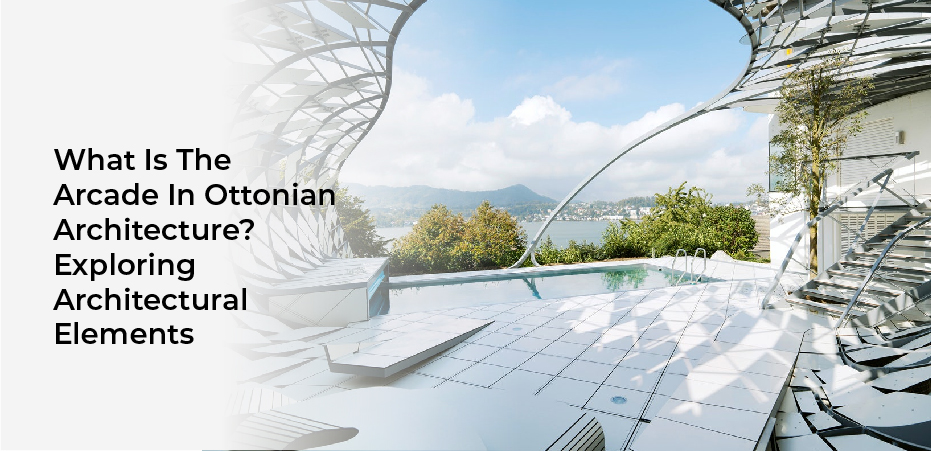Do you ever find yourself gazing in awe at the intricate details of a centuries-old cathedral or castle? If so, you may have been admiring Ottonian architecture. This style, which emerged in Germany during the reign of the Ottonian dynasty in the 10th and 11th centuries, is known for its ornate designs and religious symbolism.
One key element of Ottonian architecture is the arcade, which can be found in many of the era’s most notable structures. Essentially, it is a series of arches supported by columns or pillars that create a covered walkway or passageway.
While arcades were used in a variety of architectural styles throughout history, Ottonian arcades were often highly decorated and intricately carved, featuring patterns and motifs that reflected the era’s religious themes and beliefs.
In this article, we will explore the characteristics and symbolism of the arcade in Ottonian architecture, as well as highlight some notable examples of this design element in action.
Introduction to Ottonian Architecture
The Ottonian period of architecture is an important era in the development of European architectural traditions. It emerged during the rule of the Ottonian dynasty from 919 to 1024 AD in Germany. This was a time when the Holy Roman Empire was gaining power and influence over Europe, and the architecture of the time reflected this shift in power.
Ottonian architecture is known for its impressive use of masonry, with large stone blocks used to create strong and durable buildings. The style also featured rounded arches, barrel vaults, and decorative elements such as ornate carvings and intricate patterns. Churches were the most common type of building constructed during this period, and many of the surviving examples are still in use today.
The Ottonian style had a significant impact on the development of Romanesque architecture, which emerged in the 11th century and is characterized by its use of rounded arches and barrel vaults.
Defining the Concept of an Arcade
Defining what an arcade is can help us better understand the intricacies of the design in this era.
An arcade is a series of arches supported by columns or piers. It can be found in both interior and exterior spaces of a building.
In Ottonian architecture, arcades were used to create a sense of rhythm and order. They were often used in the nave of churches to support the weight of the vaulted ceiling.
The arcade also served as a decorative element, with intricate details carved into the arches and columns.
Arcades were not only functional but also played a significant role in the aesthetics of Ottonian architecture.
The use of arcades allowed for the creation of a sense of depth and space, making the interior of buildings appear larger and more grandiose. They also allowed for the manipulation of light and shadow, creating a dramatic effect that enhanced the overall visual impact of the building.
Overall, the arcade was a crucial component of Ottonian architecture, representing the intricate and complex design elements that characterized this era.
Characteristics and Features of the Arcade in Ottonian Architecture
You’ll love discovering the unique characteristics and features of Ottonian arcades. They used arches and columns to create a sense of rhythm and space. Additionally, they had intricate decorative details that enhanced the overall visual impact of the building.
Ottonian arcades were typically constructed with a series of arches supported by columns or piers. This formed a covered walkway along the sides of the building. The arches were often round or pointed and were sometimes decorated with intricate carvings or moldings.
Another defining feature of Ottonian arcades was the use of alternating rhythm. The arches and columns were arranged in a repeating pattern that created a sense of movement and flow. This rhythm was further enhanced by the use of light and shadow, which added depth and dimension to the space.
The decorative details of Ottonian arcades often included ornate capitals on the columns, intricate stone carvings and sculptures, and colorful mosaics or frescoes. Overall, the arcade was a crucial element of Ottonian architecture. It provided both functional and aesthetic benefits to the buildings in which they were incorporated.
Examples of Notable Arcades in Ottonian Structures
As you wander through the halls of St. Michael’s Church, you’ll notice the graceful arches and intricate carvings that adorn the arcades, showcasing the masterful craftsmanship of the Ottonian era.
One of the most notable arcades in this church is the west choir arcade. This arcade features a series of arches with intricate carvings of biblical scenes, including the crucifixion of Christ. The columns supporting the arches are also decorated with various motifs, such as vines and animals, adding to the overall beauty of the arcade.
Another example of a notable arcade in Ottonian architecture can be found in the Abbey Church of Corvey. This arcade is located in the nave of the church and features a series of arches supported by columns with intricate carvings.
One of the most striking features of this arcade is the use of alternating columns, some with Corinthian capitals and others with simpler capitals. This creates a sense of rhythm and adds to the overall aesthetic appeal of the arcade. The use of contrasting materials, such as white marble and dark stone, also adds to the visual interest of the arcade.
Symbolism and Function of the Arcade in Ottonian Design
Get ready to step back in time and discover the hidden symbolism and practical purpose behind the stunning arches found in the masterful designs of the Ottonian era.
The arcade, which is a row of arches supported by columns, played a significant role in the architecture of this period. Not only did it provide structural support for the building, but it also served as a decorative element that conveyed symbolic meaning.
In many Ottonian structures, the arcade was used to represent the idea of the divine and earthly realms. The upper part of the arcade symbolized the heavens while the lower part represented the earthly world.
This symbolism was further emphasized by the use of different materials for the columns and arches. The columns were often made of stone, which was viewed as a durable and long-lasting material, while the arches were constructed with brick or stucco, which were seen as more transient and earthly materials.
The arcade not only added an aesthetically pleasing element to the design but also conveyed a deeper spiritual meaning.
Frequently Asked Questions
What is the history of the Ottonian Dynasty and how did it influence the development of Ottonian architecture?
You want to know how the Ottonian dynasty impacted the development of Ottonian architecture. The dynasty’s emphasis on Christianity and imperial power influenced the style, which featured elaborate decoration and monumental structures like cathedrals.
How did Ottonian architects incorporate religious symbolism into their use of arcades in building design?
You’ll learn that Ottonian architects used arcades as a way to incorporate religious symbolism into their building designs. The use of arches and columns represented the holy trinity and the idea of support for the church.
Were there any significant changes in the use of arcades in Ottonian architecture over time, and what factors influenced these changes?
You asked if there were changes in Ottonian architecture’s use of arcades over time and what influenced them. Factors such as regional styles and evolving religious beliefs influenced the development of arcades in Ottonian architecture.
How did the use of arcades in Ottonian architecture differ from their use in other historical architectural styles?
You may be interested to know that the use of arcades in Ottonian architecture differed from their use in other historical styles. The Ottonians used arcades as a means of creating rhythm and order, whereas other styles used them primarily for structural support.
Can the use of arcades in Ottonian architecture be seen as a reflection of broader cultural and societal trends during the period?
You can see the use of arcades in Ottonian architecture as a reflection of broader cultural and societal trends during the period. It was a time of political stability and economic growth, which allowed for the development of monumental and decorative architecture.
Conclusion
So there you have it, as an architecture enthusiast, you now know what an arcade is in Ottonian architecture. You’ve learned about its characteristics, features, and examples of notable arcades found in various structures.
You’ve also discovered the symbolism and function behind the arcade in Ottonian design. As you continue to explore the world of architecture, remember that understanding the elements and principles of design is crucial to appreciating and analyzing various structures.
With this newfound knowledge, you can now appreciate the intricate details and thought that went into the design of Ottonian arcades, and how they contributed to the overall beauty and functionality of the buildings they were a part of.


